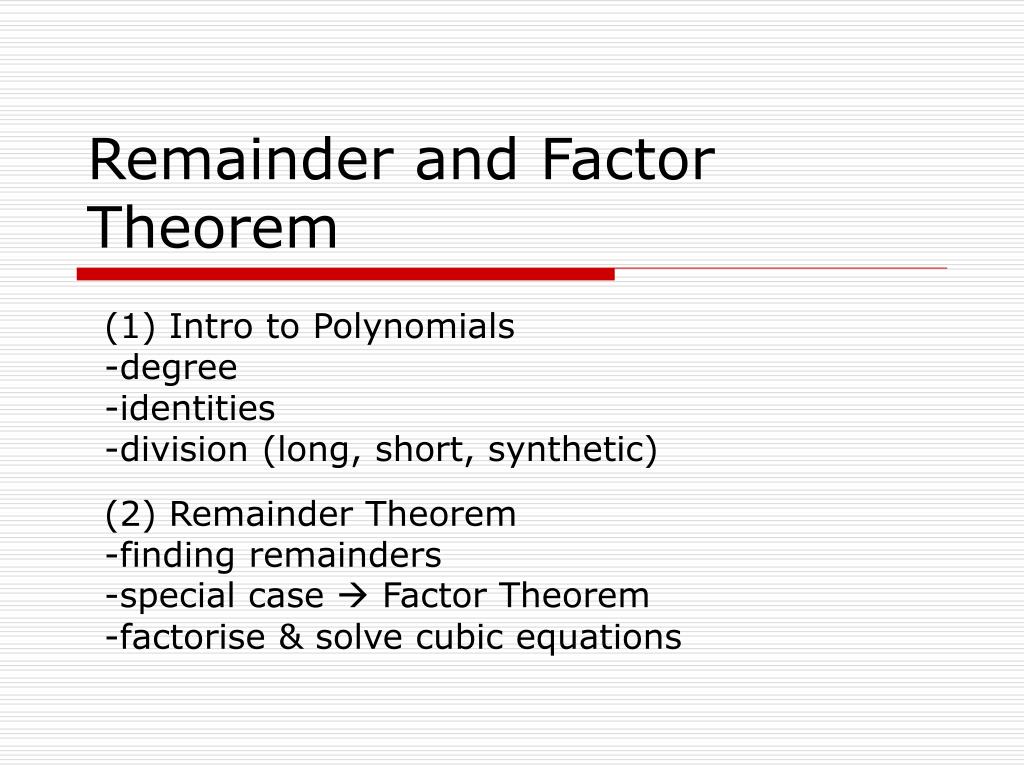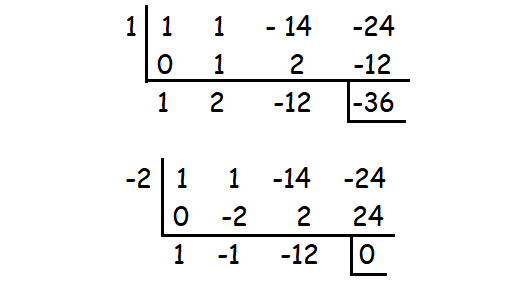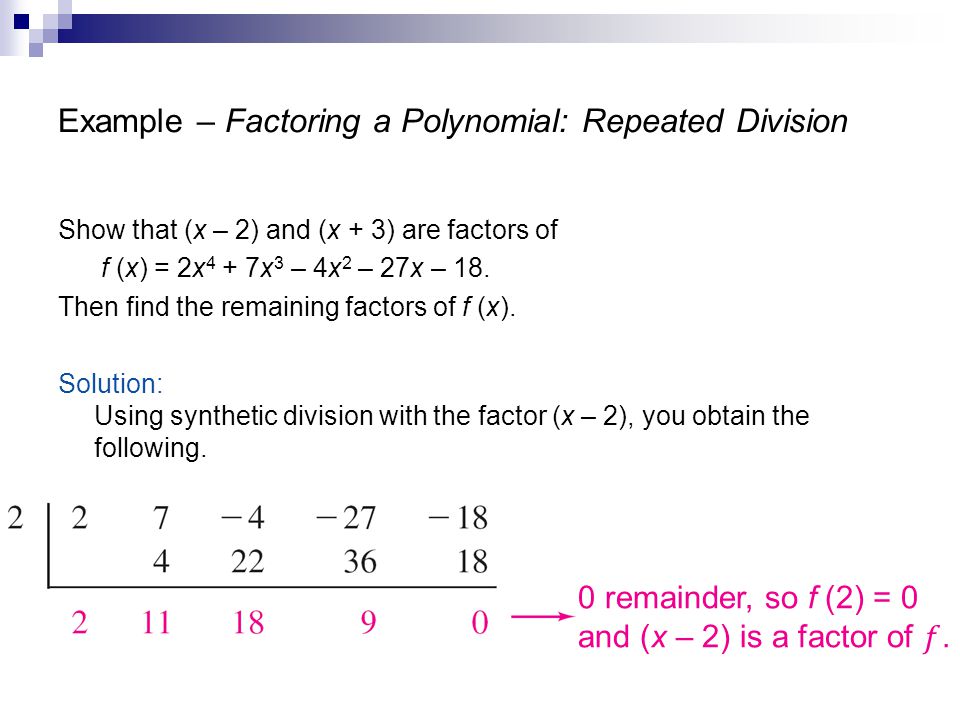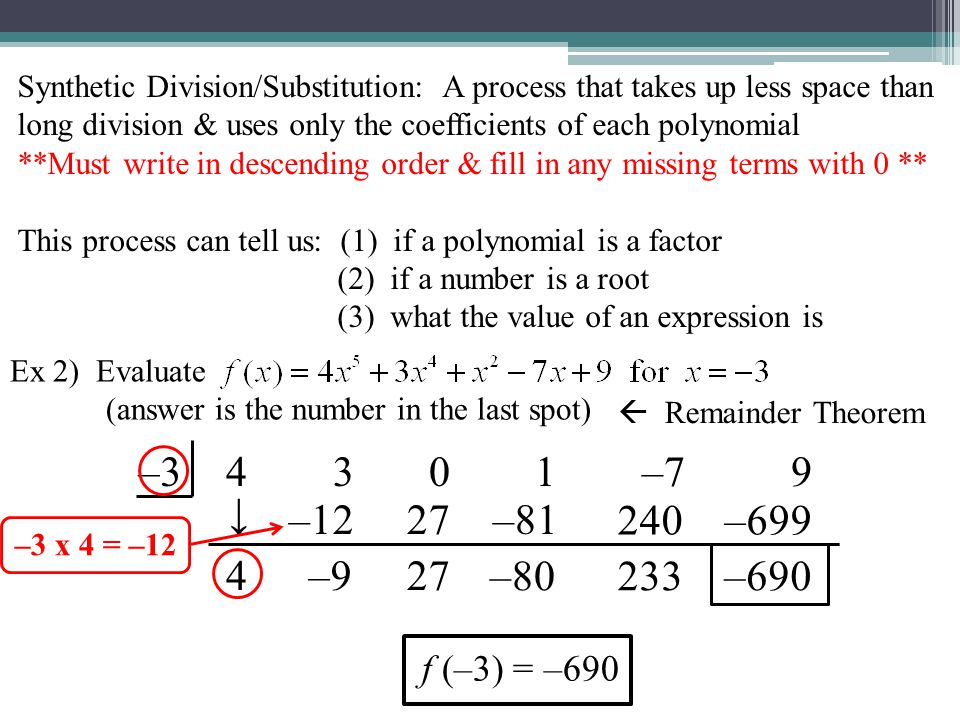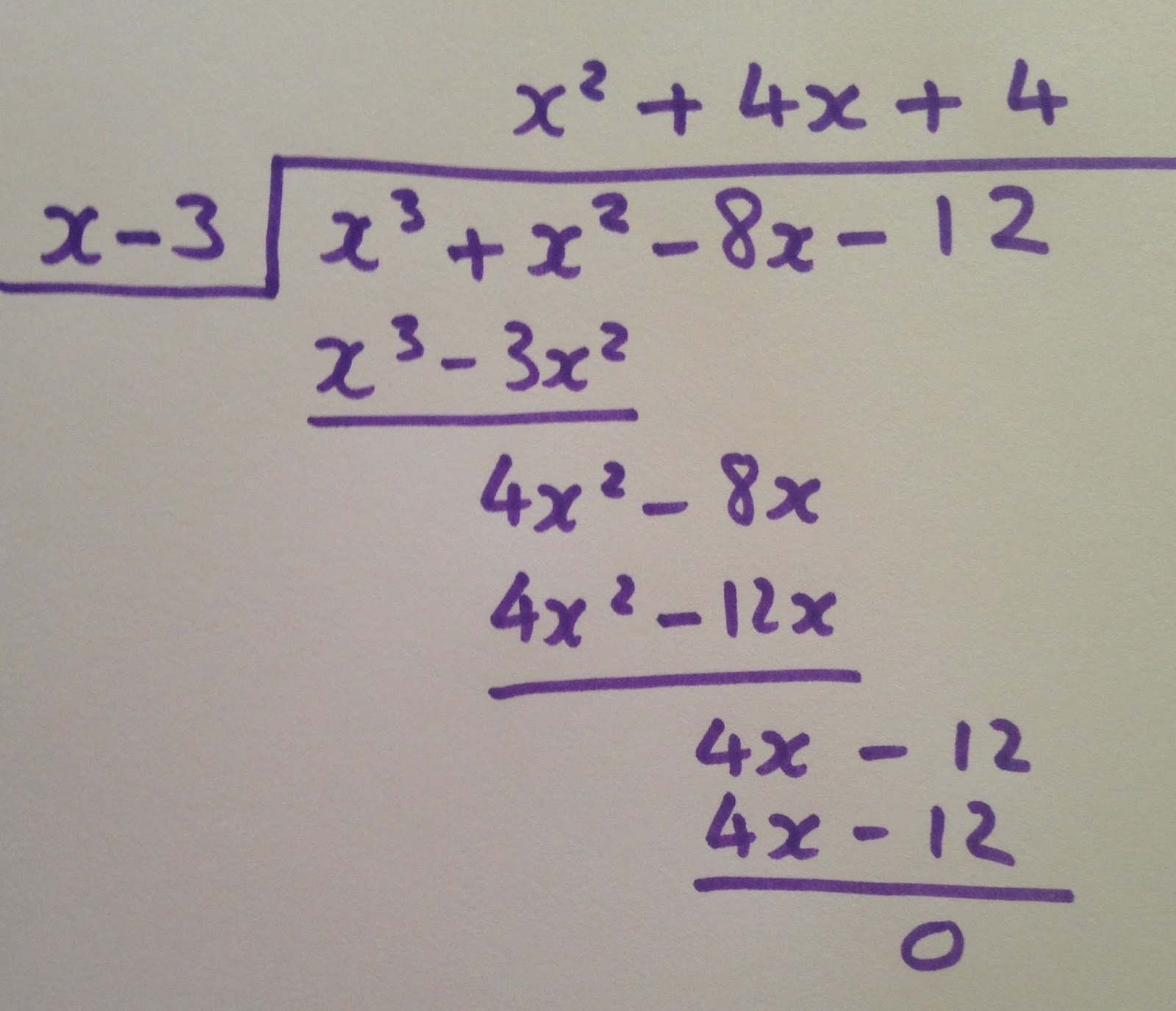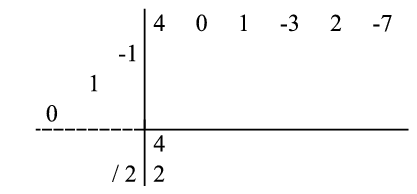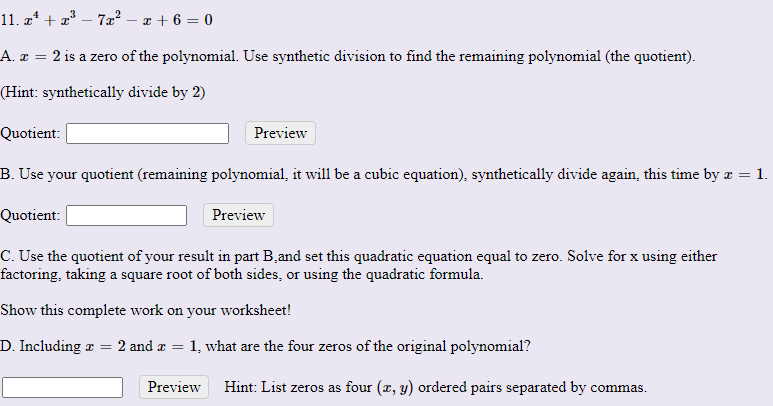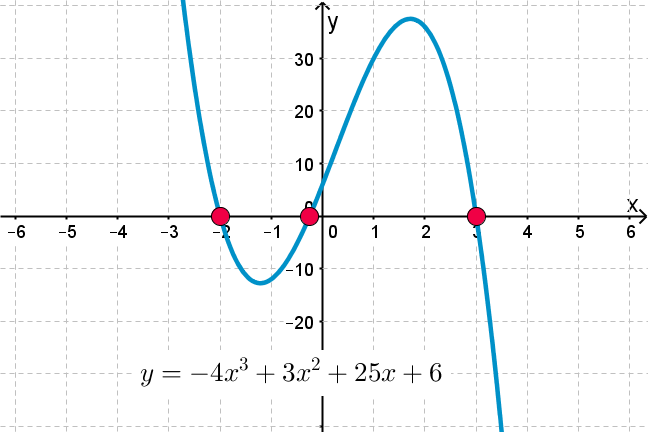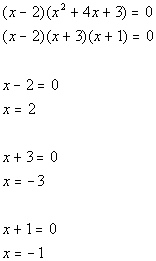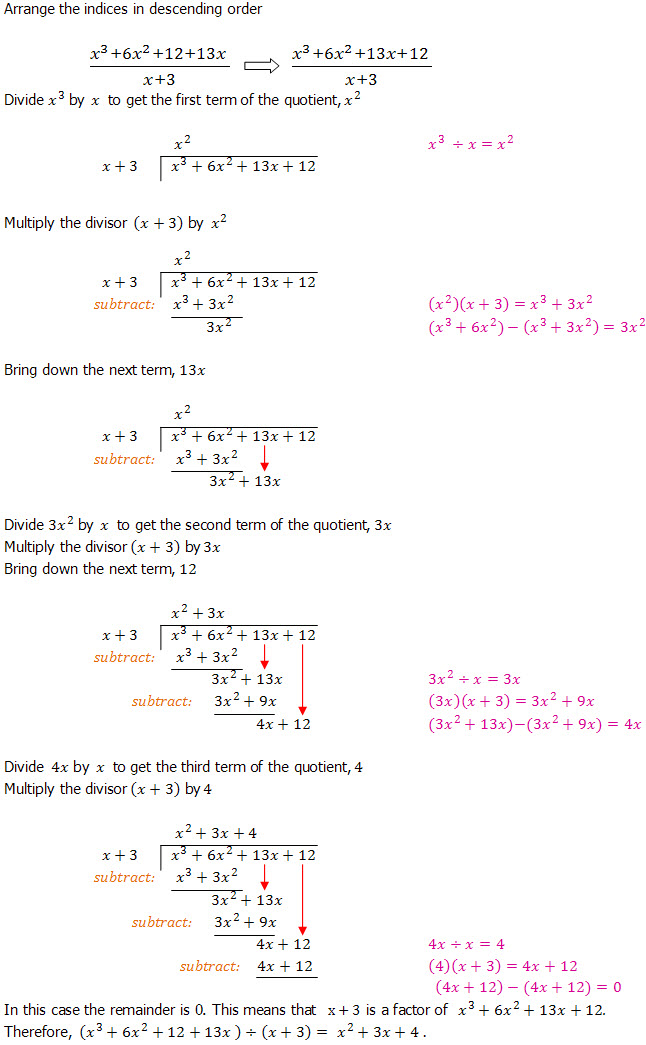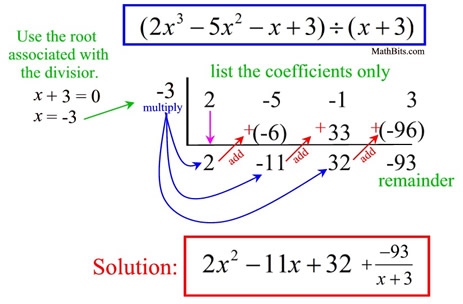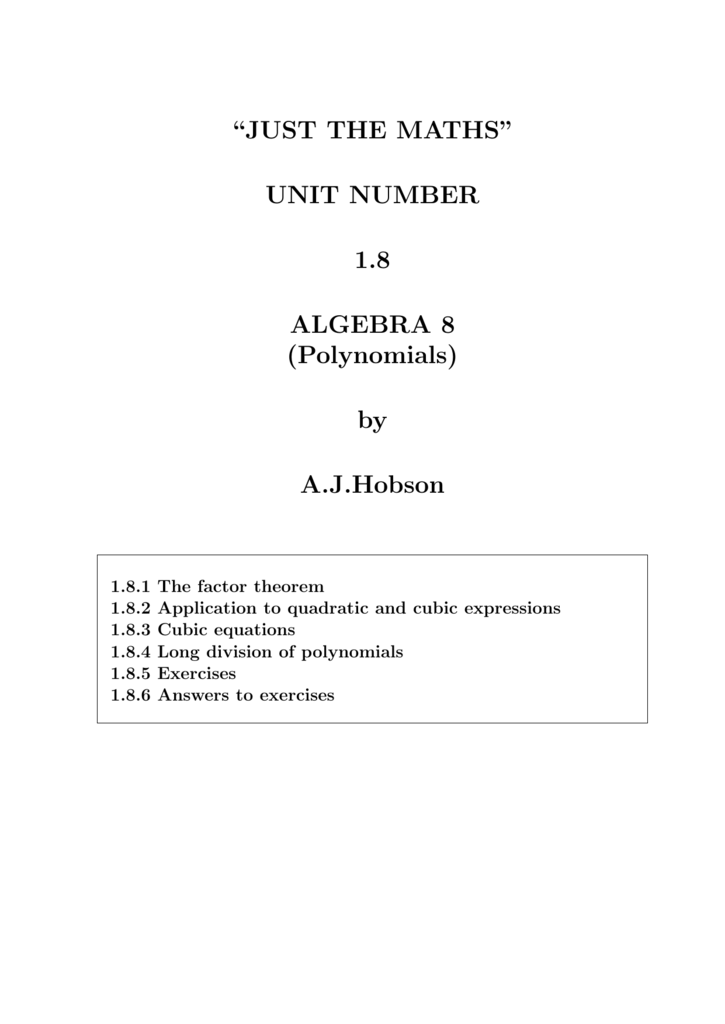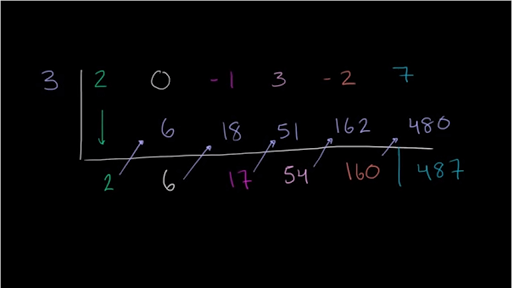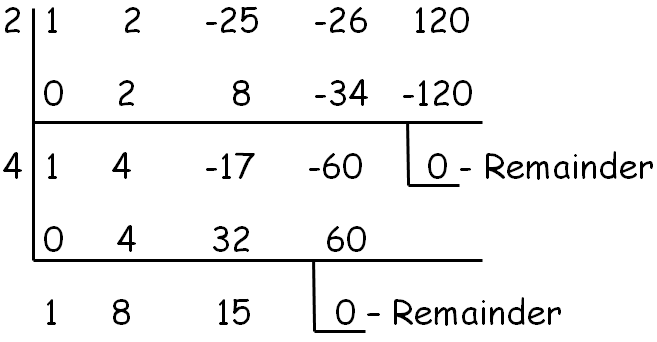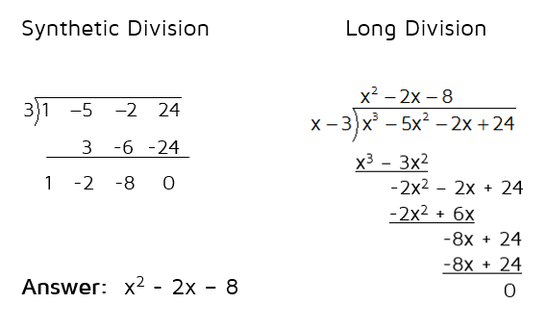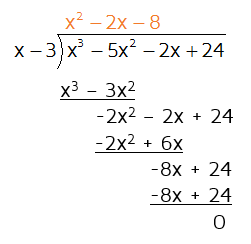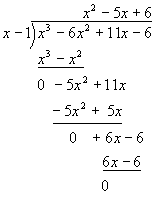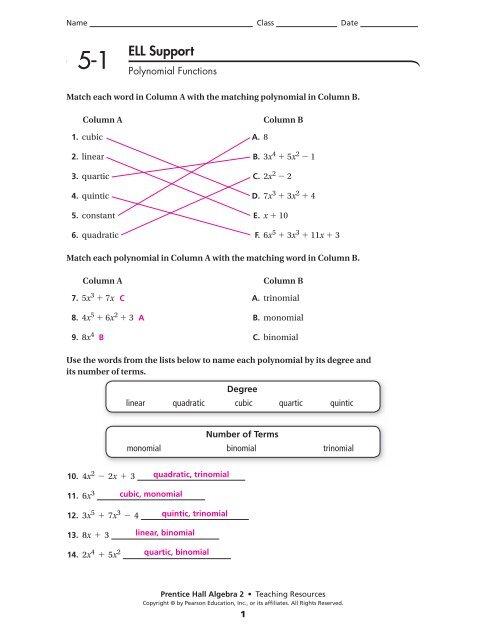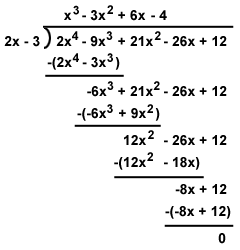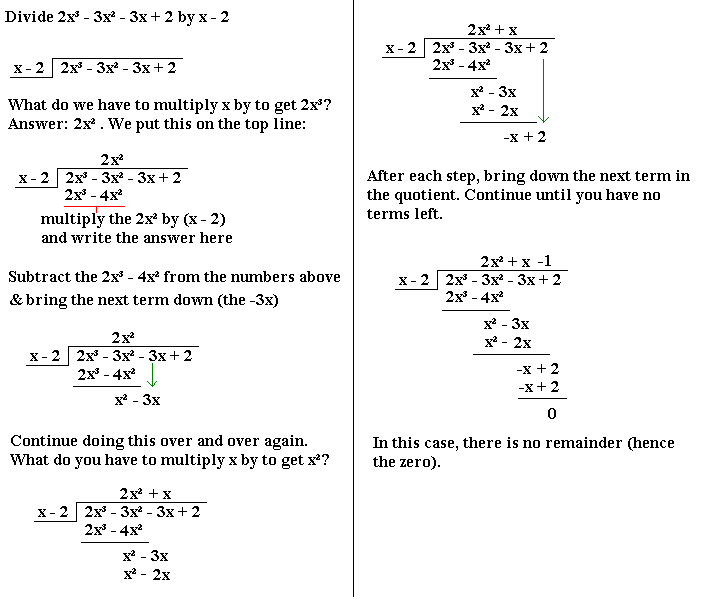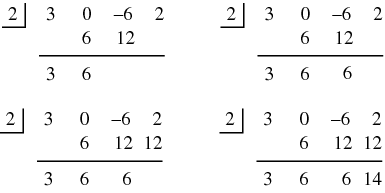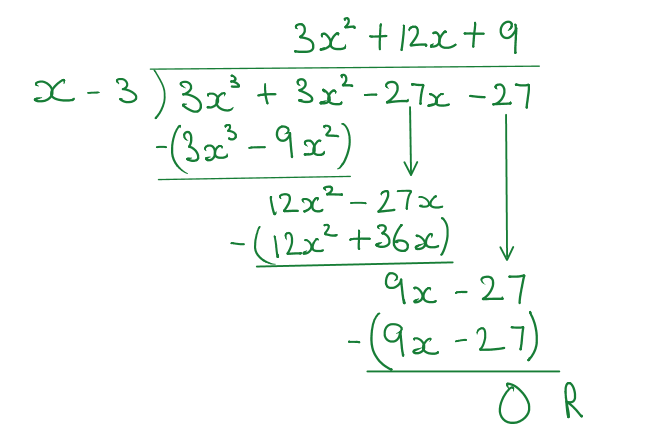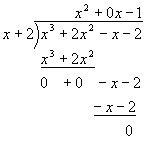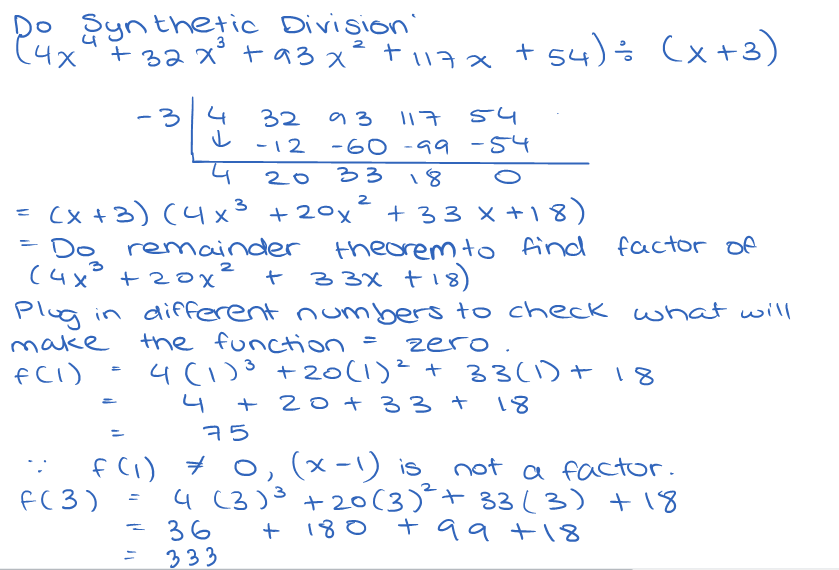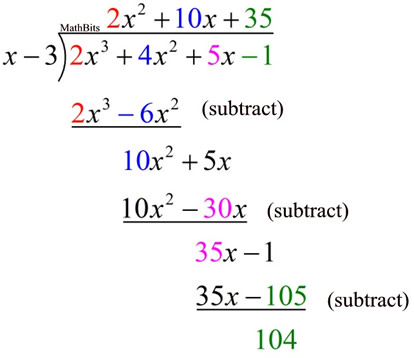How To Factor Cubic Polynomials Using Long Division
This division gives a zero remainder so x 1 must be a zero which means that x 1 is a factor.
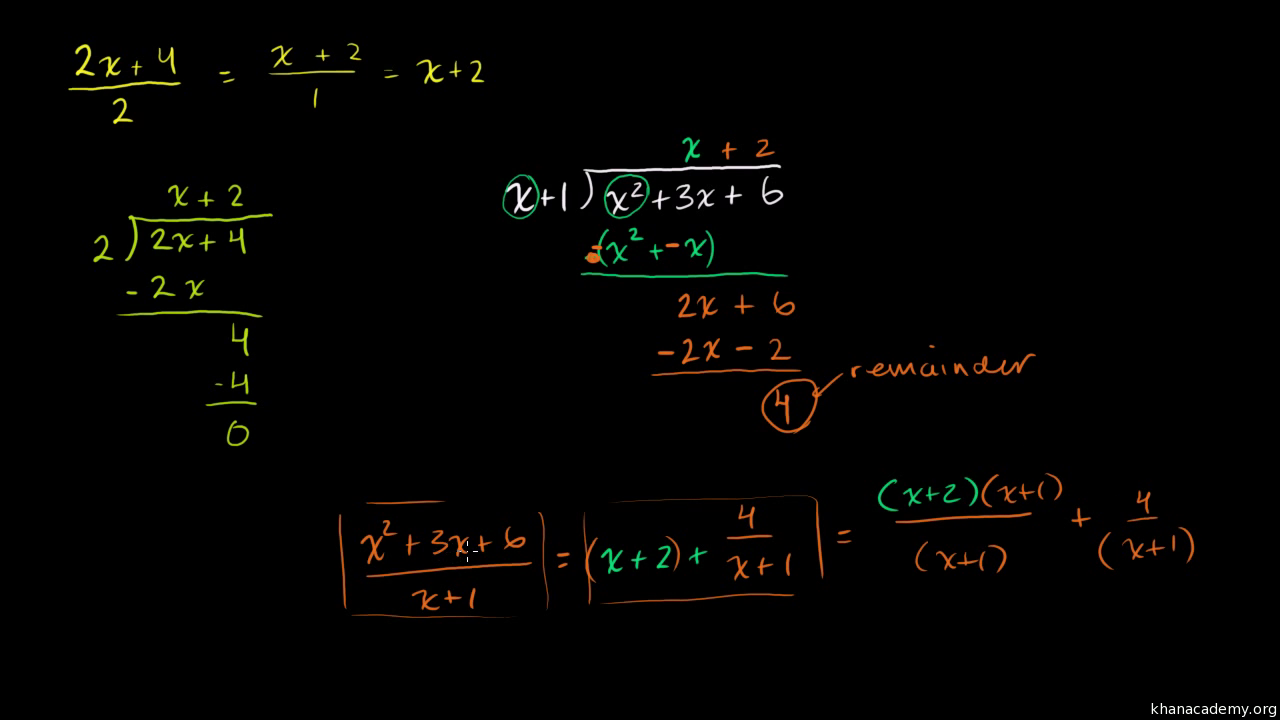
How to factor cubic polynomials using long division. If each of the 2 terms contains the same factor combine them. Sometimes it is possible to find all solutions by finding three values of xfor which px 0. Px x 2x 3x 4. And we are done.
To factor a cubic polynomial start by grouping it into 2 sections. A cubic equation has a maximum of three distinct solutions. The calculator will perform the long division of polynomials with steps shown. And so 2 is a zero.
Now we use long division to divide px by x 2 to nd out what the other possible zeros could be. How to solve cubic equations using the factor theorem and long division examples and step by step solutions a level maths solving cubics using polynomial long division related topics. This means that x 2 is a factor of our polynomial. How to divide a cubic polynomial by a linear factor using long division.
Any time you get a zero remainder the divisor is a factor of the dividend. The last term factors nicely. 15x 3 16x 2 36x 16. Finally solve for the variable in the roots to get your solutions.
This is a challenging part of advanced algebra at senior high school. In the case of the above polynomial division the zero remainder tells us that x 1 is a factor of x 2 9x 10 which you can confirm by factoring the original quadratic dividend x 2 9x 10. This means that px x 2x2 7x 12. Then find whats common between the terms in each group and factor the commonalities out of the terms.
Since i divided a linear factor namely x 1 out of the original polynomial then my result has to be a cubic.




